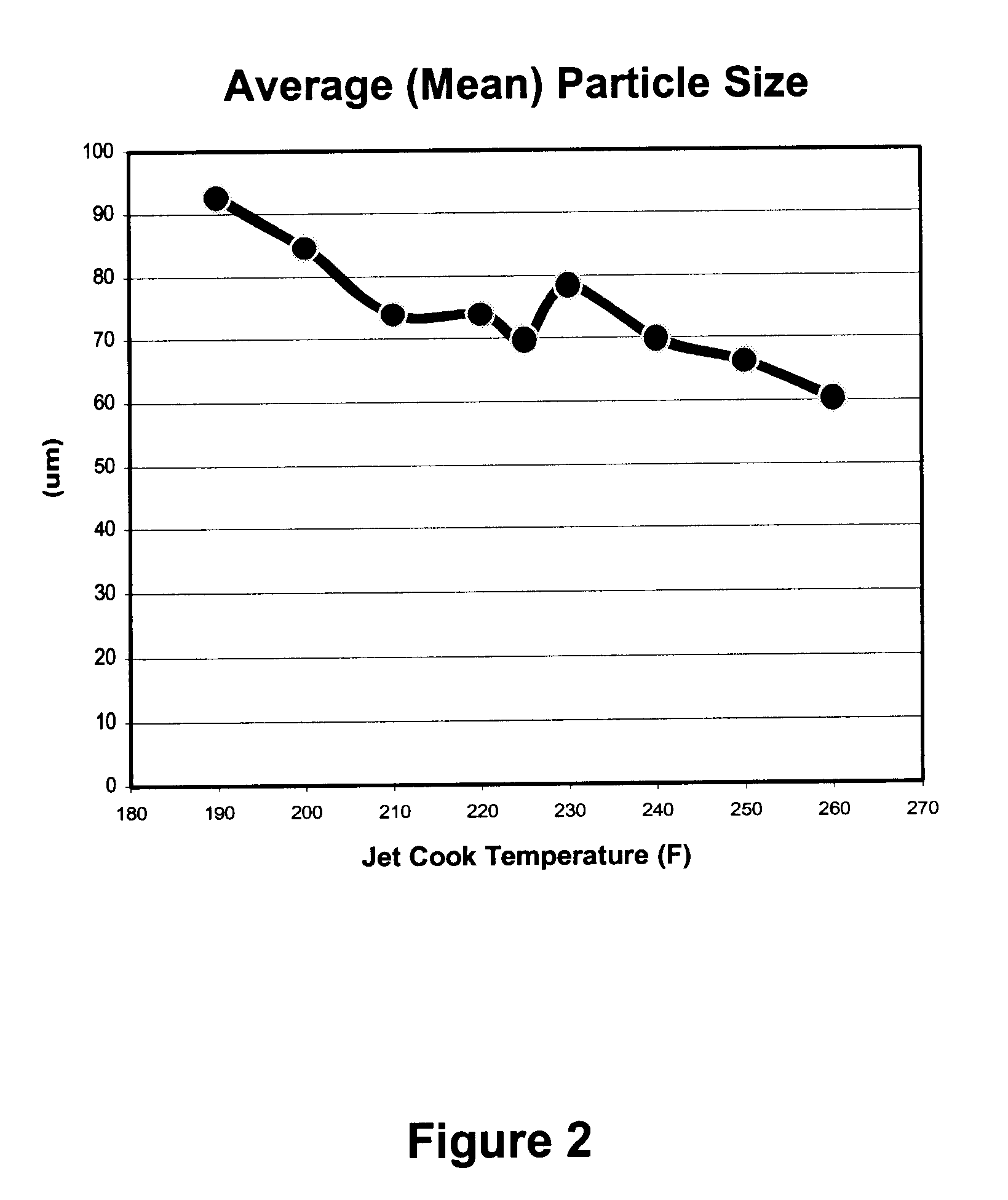Starch compositions and methods for use in papermaking
a technology of starch and composition, applied in the field of starches, can solve the problems of not all microparticles retained on the web, and the papermaking system is not all alike, so as to reduce the number of runability upsets, improve the performance of the papermaking machine, and increase the production throughput
- Summary
- Abstract
- Description
- Claims
- Application Information
AI Technical Summary
Benefits of technology
Problems solved by technology
Method used
Image
Examples
Embodiment Construction
Paper stock was prepared to compare the effect of changes in retention, drainage, and viscosity using crosslinked and non-crosslinked cationic dent corn starches based upon changes in cooking properties. For each type of starch, thirty pounds of starch were added per dry ton of wood fiber. The starches were cooked at temperatures from 192 to 265.degree. F., and solids levels were maintained from 1.28 to 1.39 percent. Average particle size of the starch particles was measured using a model LA910 Horiba Particle Size Distribution analyzer, and drainage was measured using a Dynamic Drainage Jar procedure. Preparation details are summarized in Table 1 and Table 2, below.
TABLE 1
The measured differences in drainage between the two types of starch are depicted in FIGS. 4 and 5, which show the retention and drainage for crosslinked cationic dent corn starch and non-crosslinked cationic dent corn starch, respectively. As shown in FIG. 4, the crosslinked starch cooked at a temperature from 21...
PUM
| Property | Measurement | Unit |
|---|---|---|
| temperature | aaaaa | aaaaa |
| particle size | aaaaa | aaaaa |
| temperature | aaaaa | aaaaa |
Abstract
Description
Claims
Application Information
 Login to View More
Login to View More - R&D
- Intellectual Property
- Life Sciences
- Materials
- Tech Scout
- Unparalleled Data Quality
- Higher Quality Content
- 60% Fewer Hallucinations
Browse by: Latest US Patents, China's latest patents, Technical Efficacy Thesaurus, Application Domain, Technology Topic, Popular Technical Reports.
© 2025 PatSnap. All rights reserved.Legal|Privacy policy|Modern Slavery Act Transparency Statement|Sitemap|About US| Contact US: help@patsnap.com


